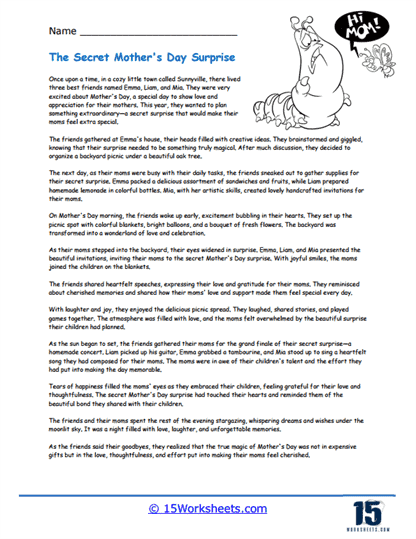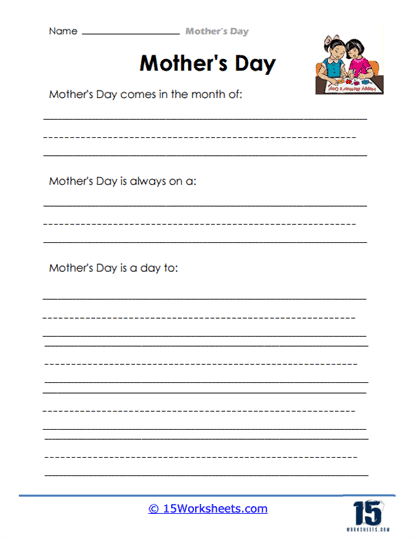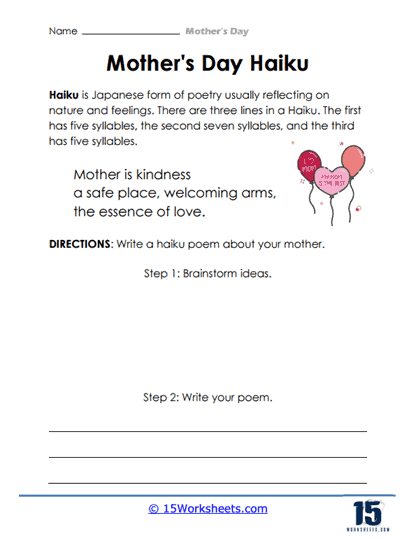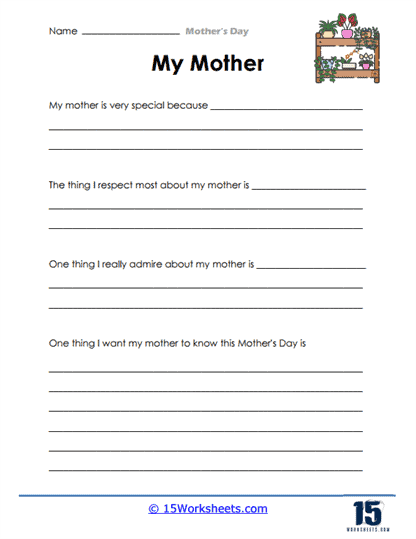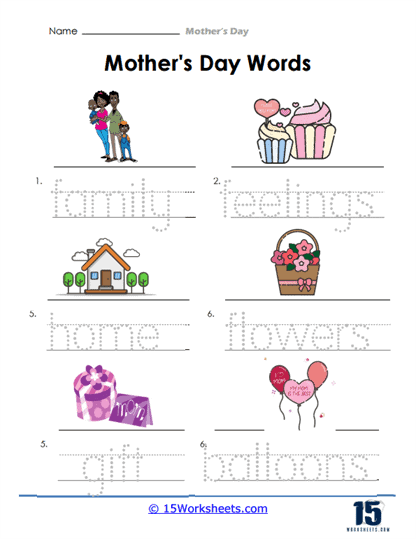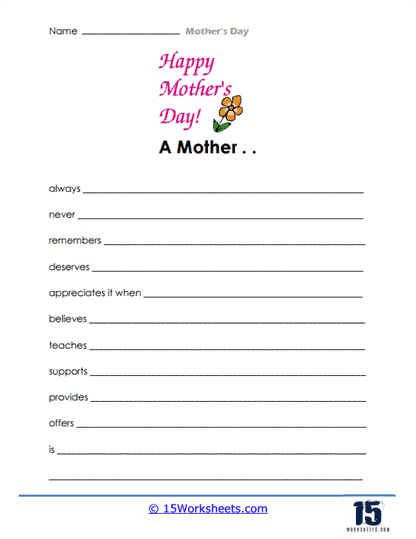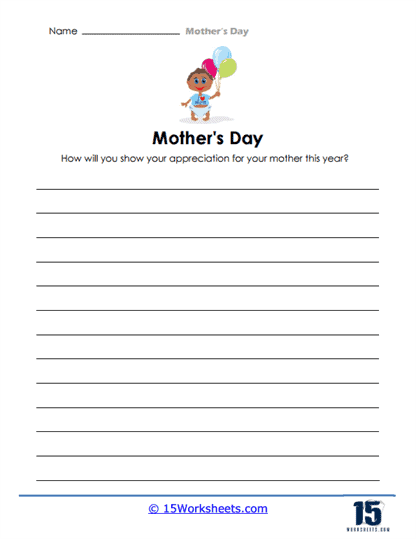Mother's Day Worksheets
What is Mother’s Day?
Mother’s Day is a celebration honoring mothers and the influence of mothers in society. It is an occasion to celebrate and show appreciation for mothers and mother figures, including stepmothers, relatives, mothers-in-law, and family friends who play a mothering role. It’s often celebrated with gifts, cards, flowers, a special meal, or other treats for moms.
The modern holiday of Mother’s Day began in the United States in the early 20th century. It was first celebrated in 1908 when Anna Jarvis held a memorial for her mother at St Andrew’s Methodist Church in Grafton, West Virginia. Anna Jarvis wanted to honor her mother’s work as well as establish a day to honor all mothers because she believed a mother is “the person who has done more for you than anyone in the world”.
In 1914, President Woodrow Wilson signed a proclamation officially establishing the second Sunday in May as Mother’s Day. The holiday then spread to other countries and many of them also adopted the second Sunday in May as Mother’s Day, although it’s celebrated on different dates in some countries.
It’s important to note that different cultures have their own traditions for honoring mothers and many have historical celebrations that precede the modern Mother’s Day. For example, the United Kingdom celebrates Mothering Sunday, which has its roots in the Christian tradition of visiting one’s mother church on Laetare Sunday. This celebration has now largely been merged with the American-style Mother’s Day.
Little Known Facts Related to Mother’s Day
- Anna Jarvis, the founder of Mother’s Day, was never a mother herself.
- Anna Jarvis later disapproved of the commercialization of Mother’s Day, and spent much of her life (and her inherited wealth) trying to restore its original spirit.
- Mother’s Day holds the record for most phone calls made in a day, even more than Christmas or Valentine’s Day.
- The most popular gift on Mother’s Day is flowers.
- More than 113 million Mother’s Day cards are exchanged annually in the U.S.
- Carnations have come to be associated with Mother’s Day. Anna Jarvis sent 500 of them at its first celebration in 1908, as they were her mother’s favorite flower.
- In most languages, the word for ‘mother’ begins with an ‘m’.
- Many countries, including the U.S., Australia, Canada, and India, celebrate Mother’s Day on the second Sunday in May.
- In the United Kingdom, Mother’s Day is celebrated on the fourth Sunday during Lent, a day also known as Mothering Sunday.
- In Thailand, Mother’s Day is celebrated in August on the birthday of the current queen.
- In Ethiopia, families gather each fall to sing songs and eat a large feast as part of Antrosht, a multi-day celebration honoring motherhood.
- Julia Ward Howe, the woman who composed “The Battle Hymn of the Republic,” promoted a Mothers’ Peace Day as early as 1872.
- In former Yugoslavia, children would tie up their mother on Mother’s Day. The only way she could get free would be to pay her children with treats.
- In the Bible, Eve is credited with being the “Mother of All the Living.”
- Mothers of twins tend to live longer, according to a study published in the journal “Proceedings of the Royal Society B.”
- The world record for having the most number of children is 69, held by a woman in the 18th century in Russia named Valentina Vassilyeva.
- In Greek mythology, Rhea was considered the mother of the gods, while the Romans celebrated the mother goddess Cybele during Hilaria, a celebration considered by some as an early form of Mother’s Day.
- The average age of new mothers in the U.S. has been steadily rising. As of 2018, it was at 26.4 years old.


